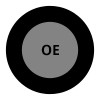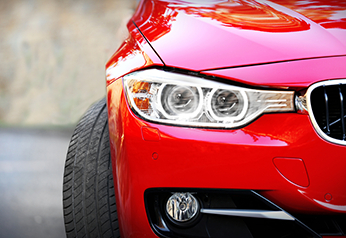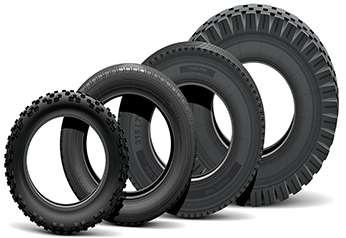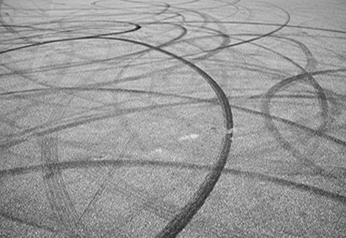
September 23, 2022
Your Complete Guide to Upsizing Tyres
Owning, or at least driving a sports car, is a goal for most auto enthusiasts. A sports car’s appeal is undeniable, thanks to a sleek aesthetic paired with unparalleled handling on the tarmac. But until you’ve scored the funds to buy this expensive piece of machinery, the next best thing to do is to make your current ride look sportier. An affordable and easy way to achieve that is to upsize your tyres.
Upsizing your tyres has become a simple way to make your vehicle look stylish while optimising its performance. That's why we see more plus-sized tyres on the streets instead of car shows. This article discusses tyre upsizing, how to do it with our tyre size chart, and its pros and cons.
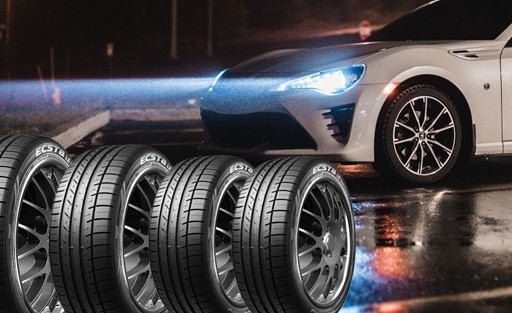
What is Tyre Upsizing?
Upsizing your tyres means fitting a larger or wider set of tyres on your vehicle.
When you bring a brand new car home from the showroom, it will come with a manufacturer-approved set of wheels and tyres. These are called Original Equipment (OE) tyres and wheels, rigorously tested and designed to fit vehicle specifications, maximising its safety, performance features, and fuel efficiency.
To check your tyre size, look for the information inside your driver's door or glove box, the owner's manual, or the tyre's sidewall.
Also read Tyre Number Meanings Explained in Full

When you upsize your tyres, you fit bigger tyres on your vehicle, which means you've veered away from the OE standards. But does this mean you're sacrificing your vehicle performance and your safety? Not necessarily, as long as you maintain the overall diameter of your wheels and tyres. This ensures that your new tyres and wheels are still compatible with your ride, maintaining the proper functioning of its suspension, speedometer, and odometer.
How Do You Upsize Tyres?
There are two ways to upsize your tyres–upgrading their size without changing the wheels and upsizing both your tyres and wheels.
Method #1: Fitting bigger tyres without changing wheels
If budget is an issue, the good news is that you can swap your tyres for a bigger size without changing your wheels –which can get a bit expensive. However, there is a strict limitation to the upgraded tyre size you want to fit. For tyre upsizing to be safe, the new overall diameter of the tyre should not exceed 3% of its original value. To compute this, let's use the photo below as an example:
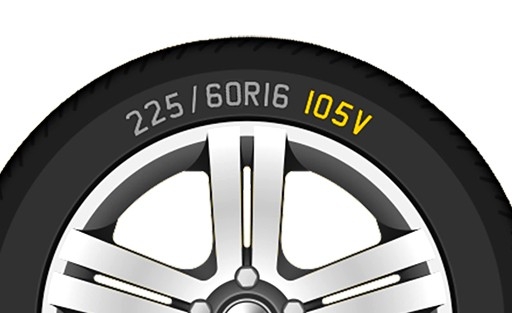
To calculate your tyre's overall diameter:
1. Look at the second number on your tyre's sidewall, which is 60. This is your tyre's profile or aspect ratio, expressed in percentage. To include it in a computation, put a decimal point before the number, which becomes .60. Then multiply it by the tyre width, which is the first sidewall number expressed in millimetres.
.60 x 225 mm= 135 mm
2. A tyre has two sidewalls, so multiply the value by 2.
135 mm x 2 = 270 mm
3. Add the rim diameter, the last number on the series of sidewall symbols and expressed in millimetres.
270 mm + 16 mm = 286 mm (overall diameter)
Therefore, your new tyre's rolling diameter shouldn't exceed 3% of 286 millimetres, which is 8.58 millimetres or .33 inches. Follow the above formula when calculating the new rolling diameter. Figures can get confusing, so hiring a tyre professional is best to ensure your computations are correct. You can also use our tyre size calculator to guide you.
Also read Your Guide to Wheels: Rim Width, Fitment, Offset and More!
Method #2: Fitting bigger wheels and tyres
The second method in upsizing your tyres involves also changing your wheels. If you're going for bigger wheels, then it's automatic that you change your tyres. To maintain the overall diameter of your wheel and tyres, you should switch to low-profile tyres with lower aspect ratios and stiffer sidewalls.
In a nutshell, the more you increase the width of your wheel, the broader and lower your tyres. Here is a tyre size chart to help you.
|
Plus Zero 225/60/R16 |
Plus One 235/50/R17 |
Plus Two 245/40/R18 |
Plus Three 255/30/R19 |
|
|---|---|---|---|---|
|
How is it done? |
You don't change the wheel but increase tyre size by a maximum of 3% maximum of its original overall diameter. |
When adding 1 inch to your wheel or rim width, you generally add 10 mm to tyre width and decrease the aspect ratio by 10. |
When adding 2 inches to your rim width, you generally add 20 mm to your tyre width and decrease the aspect ratio by 20. |
When adding 3 inches to your rim width, you generally add 30 mm to your tyre width and decrease the aspect ratio by 20. |
Also read Your Complete Guide to Low-Profile Tyres
The Pros & Cons of Upsizing Tyres
Here are the benefits of increasing your tyre size:
• Sporty Look
Motorsport cars appear sleek and quick because of their bigger tyres and wheels. Snag this look by upsizing your tyres, which instantly transforms your everyday ride into something that looks ready for the racetrack.
• Improved Stability
A bigger contact patch also means better grip, stabilising your ride. It helps you brake faster and gain better control—both essential components of safe driving.
However, upsizing your tyres also have these downsides:
• Additional Cost
Bigger tyres cost more. Sometimes, when upsizing, you may even need to change your wheels, which are often more expensive than tyres because of their high-quality materials and complex construction.
• Harsher Ride
Upgrading your wheel and tyre size means reducing the tyre sidewall—that smooth part between the tread and tyre bead. Sidewalls absorb the impact of road imperfections, such as bumps. So, if you upsize your tyres and wheels, expect to sacrifice ride comfort.
• Higher Fuel Consumption
Larger tyres provide better grip, which ensures safety and stability but also increased rolling resistance. Because upsized tyres have very efficient grip, your engine needs to work harder to make them roll, consuming more fuel.
Also read Save Cash with Fuel-Efficient Tyres

Tyre Upsizing Tips
For a smooth upsizing process, follow these guidelines:
• Use only one tyre size.
This is recommended especially for tyres on the same axle. Better yet, go for the same brand and tread pattern to ensure that your tyres have the same load index and speed rating.
Also read Is It Safe To Mix Tyres?
• Guarantee wheel compatibility.
Consult an expert to see if your wheels match your vehicle. A poor wheel fit can cause the lug bolts to loosen when you’re rolling on the road. Tyroola's tyre experts can help calculate the proper wheel offset you need to ensure your safety.
• Check your insurance.
Reach out to your insurance agent to check how this modification may affect your coverage. Some insurance companies may argue that upsized tyres may boost the risk of an accident, prompting them to increase your premium. Better to do this early than to realise later that you've compromised your coverage because of your new tyres.
• Avoid upsizing when using SUVs and light trucks.
These vehicles already use bigger tyres, and if you upsize them even more with enhanced gripping, your ride may tip and roll over when making those fast, sharp turns during emergencies. Heavier tyres may also put too much pressure on your brakes and suspension.
Get Your Upsized Tyres from Tyroola!
Tyroola offers tyres for every budget and need, thanks to our wide range of products, including wheels and hard-to-find tyre sizes. Whether you're looking for premium or affordable tyres, we've got you covered you with fast shipping and local fitting.
Shop at Tyroola now! We also offer regular tyre deals that guarantee savings and the lowest prices online.
